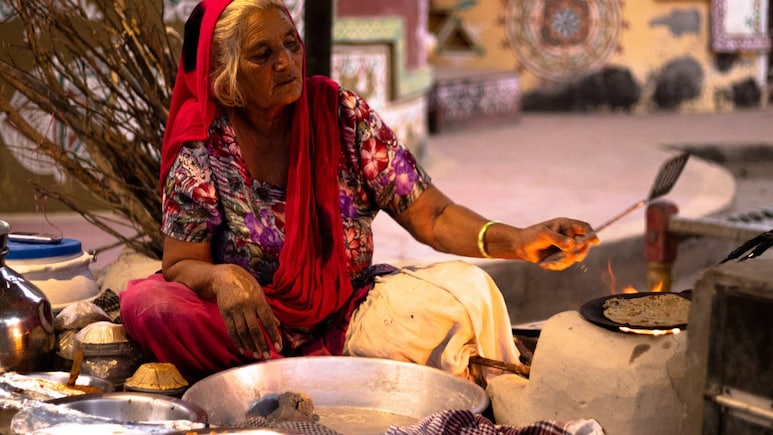
For many years chronic obstructive pulmonary disease (COPD) was viewed as a problem that affected older men who smoked heavily. It was almost always linked with long term tobacco use and the picture in most people's minds was that of a man with a lifetime of smoking behind him. This understanding has changed in a significant way. Across India and in many other parts of the world more women are now being diagnosed with chronic obstructive pulmonary disease (COPD). A surprising number of them have never touched a cigarette. Their condition has been caused by long term exposure to polluted environments, smoke filled spaces and the daily air they breathe at home and at work.
One of the most important reasons for this shift is the domestic exposure that women face, especially in rural regions. Many households still rely on traditional cooking fuels such as wood, crop waste or cow dung. These fuels release dense smoke that fills the entire kitchen and spreads through living spaces. Women spend long hours preparing meals near these stoves and inhale this smoke every single day. Over time it settles deep inside the lungs, irritates the airways and slowly damages the delicate tissues responsible for breathing. I have met several women who believed that cough and breathlessness were simply part of their routine because they had lived in smoky kitchens for most of their lives. The harm caused by this exposure is comparable to years of smoking yet it remains unrecognised by many families.
In urban areas the problem has taken on a different form. Modern offices may look clean but the air inside them carries a mix of invisible irritants. Air conditioners can circulate stale air, printers and cleaning sprays release fumes and poor ventilation traps fine particles inside meeting rooms and corridors. These factors are often ignored because they are not visible. What makes the situation even more concerning is the presence of passive smoke. Even though many workplaces claim to be smoke free, people often smoke in nearby areas such as staircases, entrances and terraces. The smell and fumes travel indoors and expose others without their knowledge or consent. Women who do not smoke are therefore breathing in harmful substances simply by being present in these spaces.
Outside the workplace the exposure continues. Cafes, public areas and crowded gatherings can all contain smoke from people around. A short period spent near someone who is smoking can irritate the lungs. Repeated exposure even in small amounts can cause lasting damage. Women are particularly vulnerable because their airways are naturally narrower which means any irritation or swelling affects them more quickly. Many women tell me that they feel breathless only during simple activities like walking to the market or climbing stairs and they assume it is because of stress or tiredness. They do not realise that their lungs are struggling because of pollution and secondhand smoke that has slowly taken a toll on their breathing.
The early signs of chronic obstructive pulmonary disease can be subtle. A mild cough that lingers for weeks, breathlessness that appears during routine work, tiredness at the end of the day or a feeling of heaviness in the chest are often dismissed. People believe they need more rest or that they are not fit enough. By the time they seek help the disease has already progressed. A simple test called spirometry can detect changes in lung function in the early stages but it is not available everywhere. Many smaller clinics do not have this facility and women in rural areas have even less access. This delays diagnosis and allows the disease to silently advance.
The rise in chronic obstructive pulmonary disease among women reflects how much the environment around us has changed. The air in our cities is filled with emissions from vehicles, construction and factories. Indoor air is polluted by everyday products we rarely think about. Rural homes continue to use fuels that produce heavy smoke. Women move through all these environments every day and absorb the effect of each exposure. The outcome is a slow weakening of the lungs which eventually results in chronic illness.
There is a strong need to widen public understanding of what harms the lungs. Tobacco is not the only factor. Household smoke, workplace pollutants, traffic emissions and passive smoke all contribute. Many women, suffering from chronic obstructive pulmonary disease have never smoked yet their lungs carry the same burden as those who have smoked for years. Workplaces should ensure strict smoke free areas, improve ventilation and reduce indoor pollutants. Families should understand that breathlessness is not something to ignore and must be checked early. Screening allows timely treatment which can prevent further lung damage and help women maintain their daily routine without distress.
This changing pattern of chronic obstructive pulmonary disease shows us that the illness is not restricted to smokers. It reflects our lifestyles, our surroundings and the challenges faced by women both at home and in the workplace.
(By Dr Prashant Saxena, Principal Director and HOD, Pulmonology, Critical Care and Sleep Medicine, Fortis Hospital, Vasant Kunj)
Disclaimer: The opinions expressed within this article are the personal opinions of the author. NDTV is not responsible for the accuracy, completeness, suitability, or validity of any information on this article. All information is provided on an as-is basis. The information, facts or opinions appearing in the article do not reflect the views of NDTV and NDTV does not assume any responsibility or liability for the same.
Track Latest News Live on NDTV.com and get news updates from India and around the world

